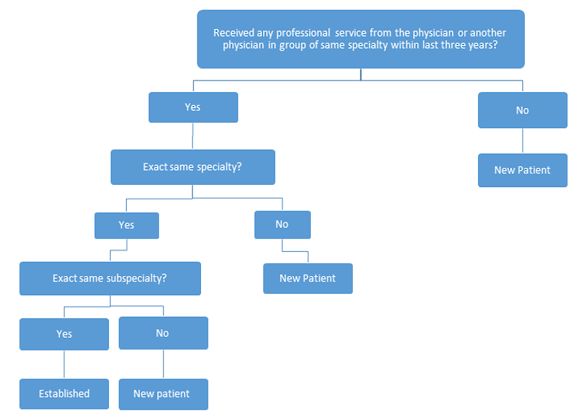The CMS released new updates in January 2023 for the medicare fee schedule summary for telehealth services.
The updates are effective from January 1, 2023 and the implemented date is January 3, 2023.
The major changes are Medicare Physician Fee Schedule and mentioned following four category and every providers, coders and billing staff knows this guidelines and changes.
- Telehealth originating site facility fee payment amount
- Expansion of coverage for colorectal cancer screening
- Coverage of Audiology services
- Other covered services
The Medicare will continue to pay the telehealth service payment at same rate in person outpatient fee rate through out end of the 2023, And there is no changes and or decrease the fee rate.
And also, the Medicare will continuously paying the audio visit service CPT code 99441, 99442 & 99443 at the same rate of outpatient established office rate for the length of service/time spends with the patient.
For
Medicare patients, the provider would continue to bill the telehealth
claims with the place of services indicate that the service bill under
In-Person visit. And the claims must be billed with modifier 95 to
indicate the service is performed in telehealth.
For Medicare adding new HCPCS codes to the list of telehealth services on a category 1, and the HCPCS codes are G0316, G0317, G0318, G3002, and G3003.
We are keeping many services that are temporarily available as telehealth services for the duration of the COVID-19 Public Health Emergency (PHE) on a Category 3 basis through CY 2023 and including the following CPT codes.
The CPT codes are 90875, 90901, 92012, 92014, 92550, 92552, 92553, 92555-92557, 92563, 92567, 92568, 92570, 92587, 92588, 92601, 92625-92627, 94005, 95970, 95983, 95984, 96105, 96110, 96112, 96113, 96127, 96170, 96171, 97129, 97130, 97150-97158, 97530, 97537, 97542, 97763, 98960-98962, 99473, 0362T, and 0373T.
These codes are available up to through
December 31, 2023 in Medicare telehealth list.
The Category 3 CPT codes in telehealth services will be covered through 2023 and the Non-facility payment rates for telehealth services will remain the same through 2023 (physician offices are defined by Medicare as “Non-Facility” setting.
So this means telehealth payments will remain the same as in-person through 2023 and the direct supervision may continue to be provided virtually through 2023.
The CMS decided to continue paying for all of the codes on the telehealth list that were scheduled to stop 151 days after the PHE through the end of 2023.
Telehealth Originating site facility fee rate Update
The payment amount for HCPCS code Q3014 (Telehealth originating site facility fee) is 80% of the lesser of the actual charge, or $28.64 for CY 2023 services.
Other than office visit codes, the E/M visits includes following,
- Hospital inpatient,
- Hospital observation,
- Emergency department,
- Nursing facility,
- Home services,
- Residence services, and
- Cognitive impairment assessment visits.
- G0316 for reporting prolonged hospital inpatient or observation services
- G0317 for prolonged nursing facility services
- G0318 for prolonged home or residence services
- G2212, for prolonged office/outpatient services
- G3002 - Chronic Pain Management
- G3003 - Chronic Pain Management
Place of Service Updates
The place of services code is provided to pay the claims correctly at the same time the health care providers need for the specificity than Medicare for the services rendered. And the Medicare does not always need this greater the specificity to pay the claims.
The following two codes are created to meet the industry standards,
POS 02: Telehealth Provided Other than in Patient’s Home Descriptor
- The location where health services and health related services are provided or received, through telecommunication technology.
- Patient is not located in their home when receiving health services or health related services through telecommunication technology.
POS 10: Telehealth Provided in Patient’s Home Descriptor
- The location where health services and health related services are provided
or received through telecommunication technology.
- Patient is located in their home (which is a location other than a hospital or other facility where the patient receives care in a private residence) when receiving health services or health related services through telecommunication technology
But the Medicare does not identified a need for new place of service code (POS 10). The MACs will instruct their providers to continue to use the Medicare billing instructions for Telehealth claims in specified under section Pub. 100-04.


